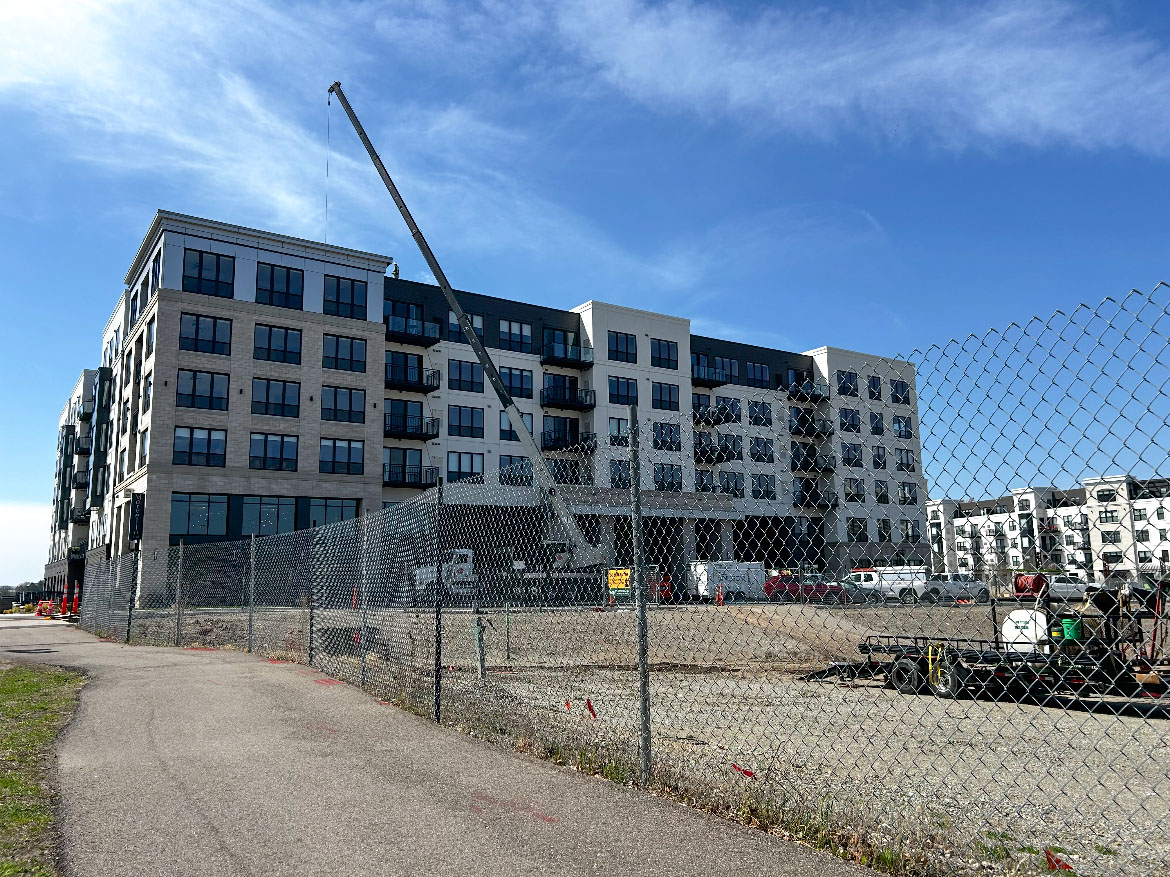On May 7, the St. Paul City Council will hold a final vote on a new rent stabilization ordinance that will eliminate what is often referred to as “rent control” for housing built after 2004 in the city, forever. This comes after a long road of contention and amendments for the policy.
On Nov. 2, 2021, St. Paul voters approved a rent stabilization ordinance, which went into effect in spring 2022. The ordinance, sometimes referred to as “rent control,” limits residential rent increases to no more than three percent in a 12-month period.
Quickly, the city amended the policy in 2022 to include a 20-year exemption for new housing construction, allow landlords to raise rents in a unit after a “just cause” eviction and request exceptions to the three percent rent increase limit based on the grounds that their property is not making enough return on investment. These amendments went into effect Jan. 1, 2023.
The new rent stabilization ordinance
Now, the St. Paul City Council has introduced a new rent stabilization ordinance in conjunction with new tenant protections, sponsored by council members Anika Bowie, Saura Jost and City Council President Rebecca Noecker.
The new ordinance would indefinitely exempt all buildings issued a certificate of occupancy after 2004 from rent control.
The proposed change in St. Paul’s rent stabilization comes after slowing housing construction in the city since 2021. A 2025 map from the city of St. Paul showed that the construction of market-rate rental units in the city shrank from 821 units in 2023 to 112 in 2024. This reduction in unit construction is likely due in part to macroeconomic conditions like interest rates, which, after the Covid-19 pandemic, remain around a 20-year high.
St. Paul Mayor Melvin Carter, alongside some of the city’s developers and other advocates, say that the current rent stabilization policy is denying developers the necessary investment to construct housing and is contributing to this slowdown.
“There’s lots of vacant lots that could use investment and development and more housing and growth of the tax base,” William Lindeke, a lecturer in urban studies at the University of Minnesota’s department of geography, environment and society, said. “Instead, they’re just sitting there waiting for someone to do something.”
Lindeke is the “Cityscape” columnist at MinnPost, and one of the founders of Streets.mn, a member-supported and volunteer-run news organization that covers land use and transportation news, among other topics, in Minnesota.
Lindeke described the current rent stabilization policy as St. Paul “redlining itself,” or rather “cutting itself off from investment around the country that could be happening here.”
In a recent MinnPost article, Lindeke found that St. Paul experienced an 81 percent decline in housing construction compared to its prior three-year average.
The Macalester Urbanists (MacUrb) were at the first public hearing on the policy on April 9, giving comment in favor of the proposed rent stabilization ordinance.
“A few months ago, I needed to find a new housing arrangement,” Adam Schwalbe ’25, co-president of MacUrb, wrote in an email to The Mac Weekly. “But, there were not a great deal of landlords to choose from … Supply was limited.”
“The very real effect of this was that we had no bargaining power, and ended up paying $100/mo more than otherwise,” continued Schwalbe. “We could eat the loss. Others cannot.”
Opposition to the new ordinance
At a community meeting hosted by the city council on the West Side of St. Paul at the Neighborhood House community center on March 27, after a presentation being given by council members Noecker, Bowie, Jost and Johnson on the proposal and new tenant protections, a man abruptly stood up.
“Who here is a renter in St. Paul?” Carlos Garcia Velasco, organizing director at Center for Workers United in Struggles, a Twin Cities organization dedicated to work-centered community organizing, asked.
With this question, Velasco interrupted Jost’s Legislative Aide, Tom Basgen, as he began to move the meeting to a question-and-answer session.
“Raise your hand. I want to see where my renters are,” Velasco continued.
Following, less than a quarter of the people in the room raised their hands.
The Mac Weekly spoke to Velasco after the meeting about his decision to stand up in front of the room.
Velasco, who lives on the West Side of St. Paul, came to the meeting out of curiosity after hearing about it from a colleague. He had been involved in the original organizing movement to get rent stabilization on the St. Paul city referendum in 2021.
“I felt compelled to ask the question because I saw a really homogenized group of people,” Velasco said. “There’s a lot of people with different interests … what’s their stake in the game, right?”
Velasco came to the meeting to understand why the city was reconsidering the ordinance that he had worked on to pass, emphasizing his frustration with the language used by the councilors to justify their sponsorship of the new policy.
“To me, rent stabilization is about the renter. It’s not about the cities,” Velasco said. “To me, this was always about [the renter —] someone who’s working one or two jobs, even three, to sit in a fucking crummy, one-bedroom apartment … Everybody [is] one paycheck away from the streets, [and] the whole houseless shelters are full.”
Tenant protections
Additionally, the city council has introduced new tenant protections. The tenant protections, according to Noecker, are meant to be considered side-by-side with the new rent stabilization ordinance, and are a way to offset any instability the new rent stabilization ordinance could cause.
The measure aims to protect renters by preventing landlord discrimination through tenant screening criteria, requiring landlords to give renters notice if their home is being sold and eviction is possible, and capping the amount landlords can require for a security deposit. This initiative is sponsored by council members Cheniqua Johnson, Hwa Jeong Kim, Noecker and Jost.
A policy very similar to this one had been passed in 2021 in St. Paul, but was blocked by a federal judge after a lawsuit was filed by a group of landlords.
At the community meeting on the West side, Johnson presented the protections as chairperson of the city’s Housing and Redevelopment Agency.
The new protections would create uniform tenant screening criteria and application criteria. Under these, landlords can not deny an application for rent due to criminal and civil history, including petty misdemeanors, gross misdemeanors that are three years old, time spent in the juvenile justice system or for 7-year-old felonies that are not related to the distribution of controlled substances. Landlords also may not deny an application due to credit or rental history.
“You are a renter, you apply to a place, you may get denied and you don’t necessarily know why,” Johnson said of the proposed tenant protections. “I think that the communication piece is really important, and so you’ll see that in the ordinance as well.”
The city’s public hearing a couple of weeks later was packed with people and had 43 public comments given on rent stabilization and seven on the tenant protections.
Sandy’Ci Moua, a landlord of a small property and community organizer, began the public hearing, describing how she was traumatized and “ripped to the core” when a tenant of hers, who had criminal charges on their record, threatened her and her family. She described her experience of being isolated in her home for several days without formula for her baby to the council, commenting on the tenant protections proposal. She said that the 30-day eviction notice proposed in the tenant protections would have allowed this tenant to stay on the property and continue to threaten her.
In recent years, the Twin Cities have received praise for their progressive land use reforms that incentivize housing development by banning single-family zoning and eliminating parking restrictions. Still, rent stabilization remains a puzzling component of recent declines in construction.







